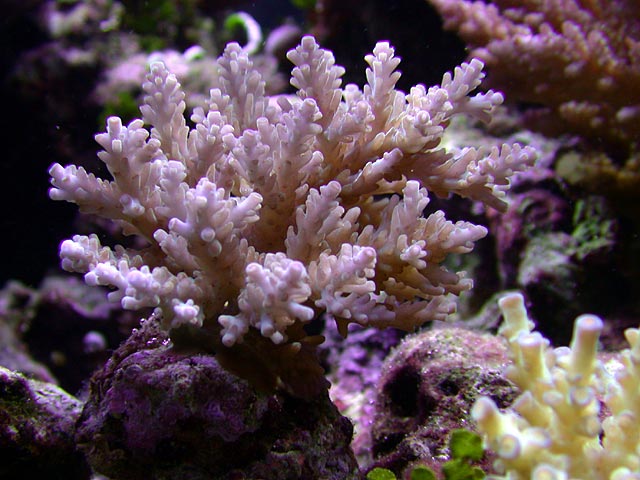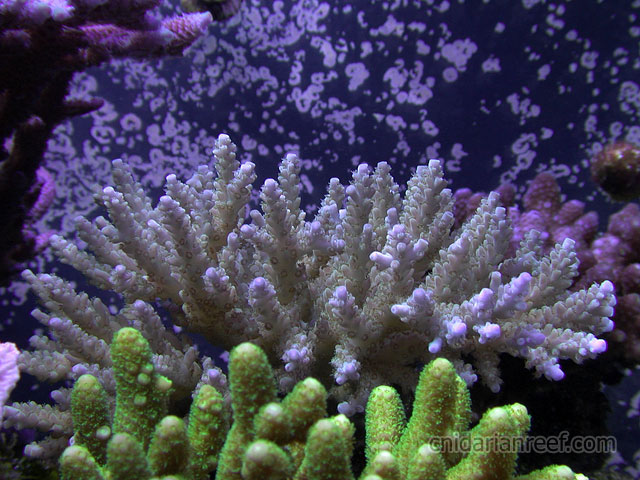Hi Howard:
Some I cannot determine from your photos, some may not be able to be dtermined, and some are all yours to determine. Did you post a photo of the whole colonY.. I must be missing it, if so.
So, here'show I would answer based on what i can see from your corals (you should be able to do much better with it than me)
1. around single axial around more than one axial
2. can't tell (need to see whole colony)
3. can't tell (need to see whole colony)
4. can't tell (need to see whole colony)
5. axial dominated
6. can't tell from photo but appear to be different
7. can't tell
8. appears to be broken costate
9. can't tell
10. one size or graded
11. appears to be developed?
12. I'd probably call them nariform, but varied
13. oval to rounded
14. many
15. all yours
16. small to medium
17. all yours
18. terete
19. need to see whole colony, and may not be possible to determine unless mature
20. don't touch
21. can't tell
22. porous
23. can't tell
JB:
Look at the diagram on p. 54. That one has three synapticular rings. Synapticulae are the plates and rods and layers between the walls and rings can form from them...and sometimes they don't. So, you can see in that photo that there are three layers outside the axial wall, and all three form rings.
Some I cannot determine from your photos, some may not be able to be dtermined, and some are all yours to determine. Did you post a photo of the whole colonY.. I must be missing it, if so.
So, here'show I would answer based on what i can see from your corals (you should be able to do much better with it than me)
1. around single axial around more than one axial
2. can't tell (need to see whole colony)
3. can't tell (need to see whole colony)
4. can't tell (need to see whole colony)
5. axial dominated
6. can't tell from photo but appear to be different
7. can't tell
8. appears to be broken costate
9. can't tell
10. one size or graded
11. appears to be developed?
12. I'd probably call them nariform, but varied
13. oval to rounded
14. many
15. all yours
16. small to medium
17. all yours
18. terete
19. need to see whole colony, and may not be possible to determine unless mature
20. don't touch
21. can't tell
22. porous
23. can't tell
JB:
Look at the diagram on p. 54. That one has three synapticular rings. Synapticulae are the plates and rods and layers between the walls and rings can form from them...and sometimes they don't. So, you can see in that photo that there are three layers outside the axial wall, and all three form rings.


